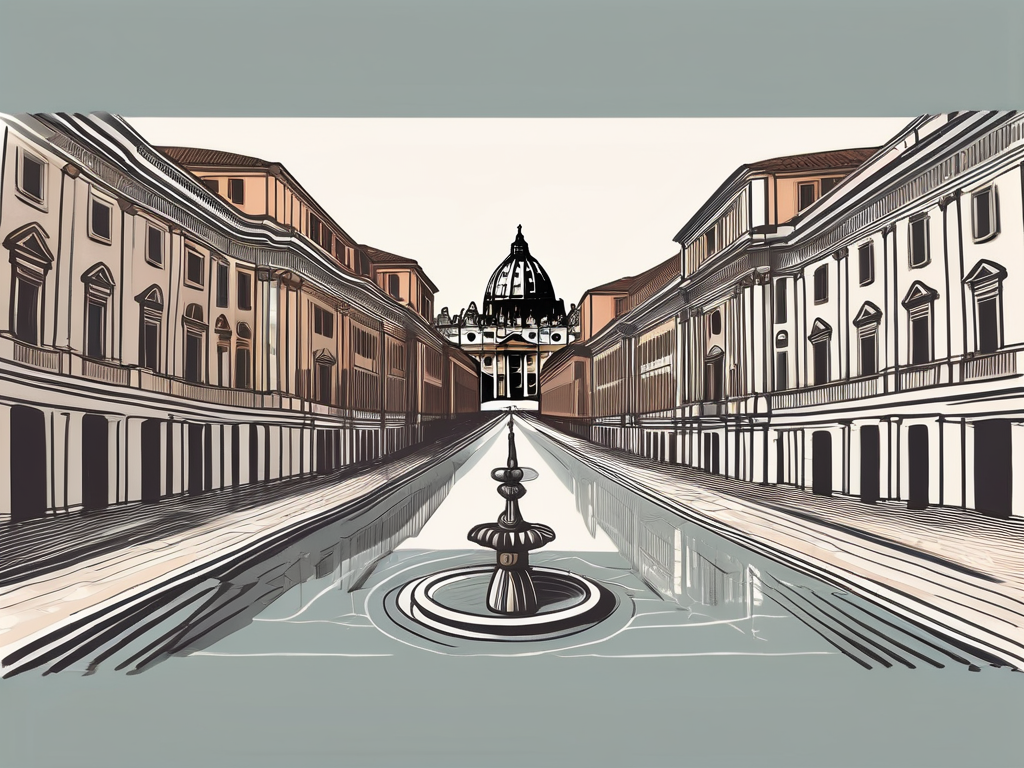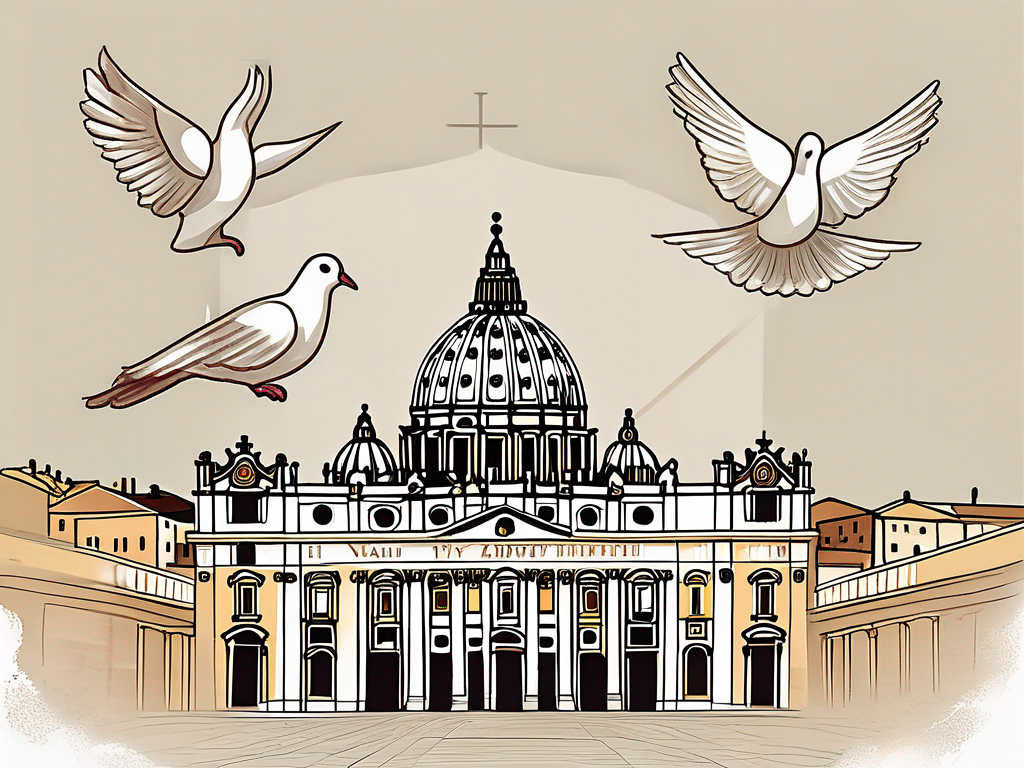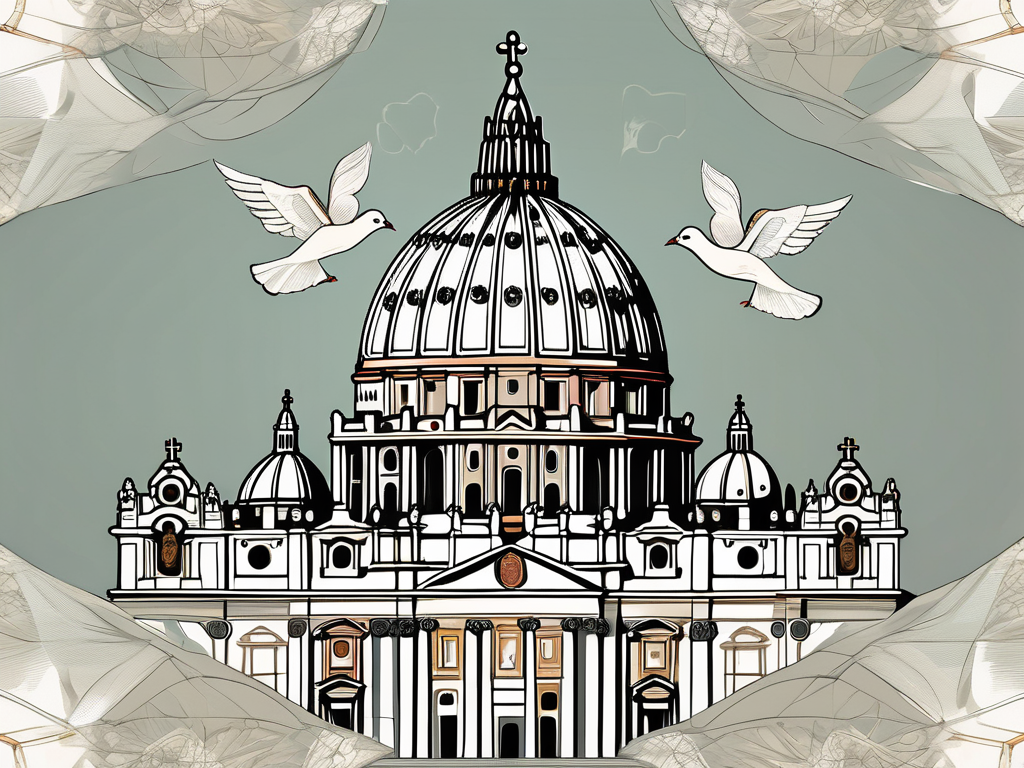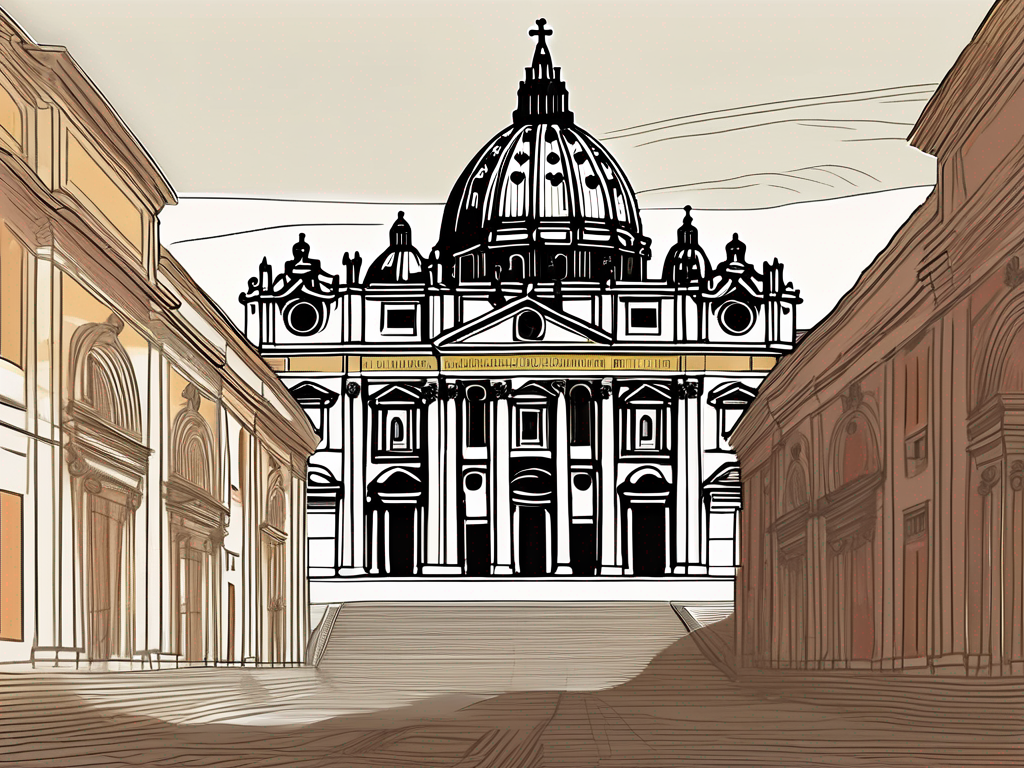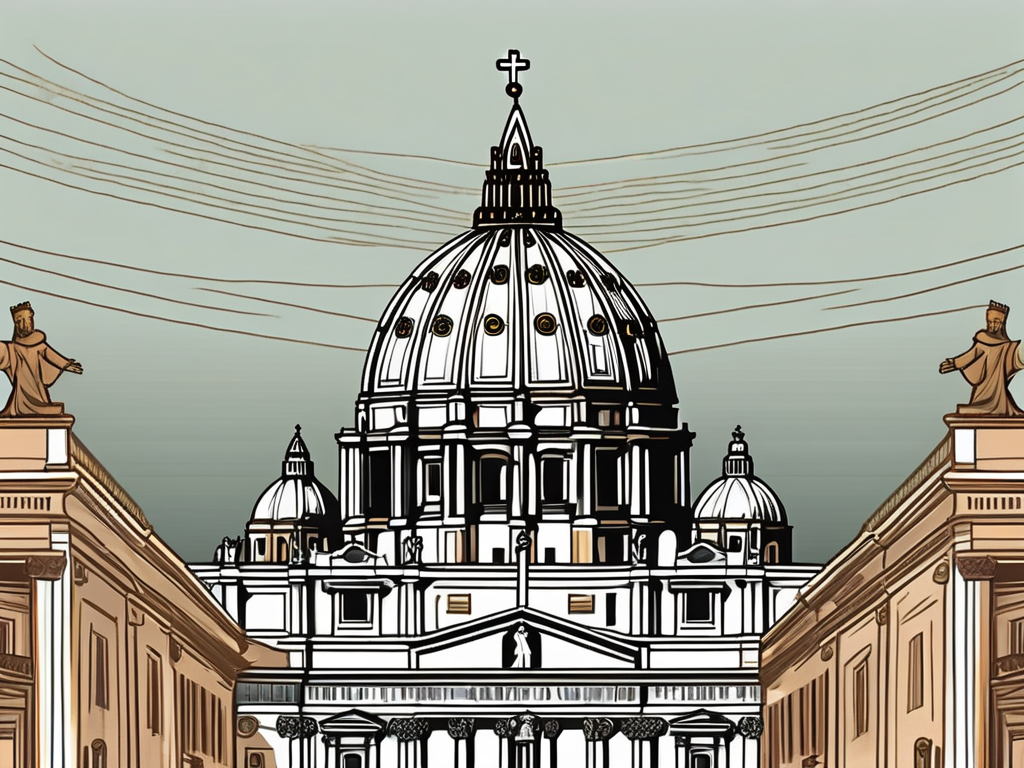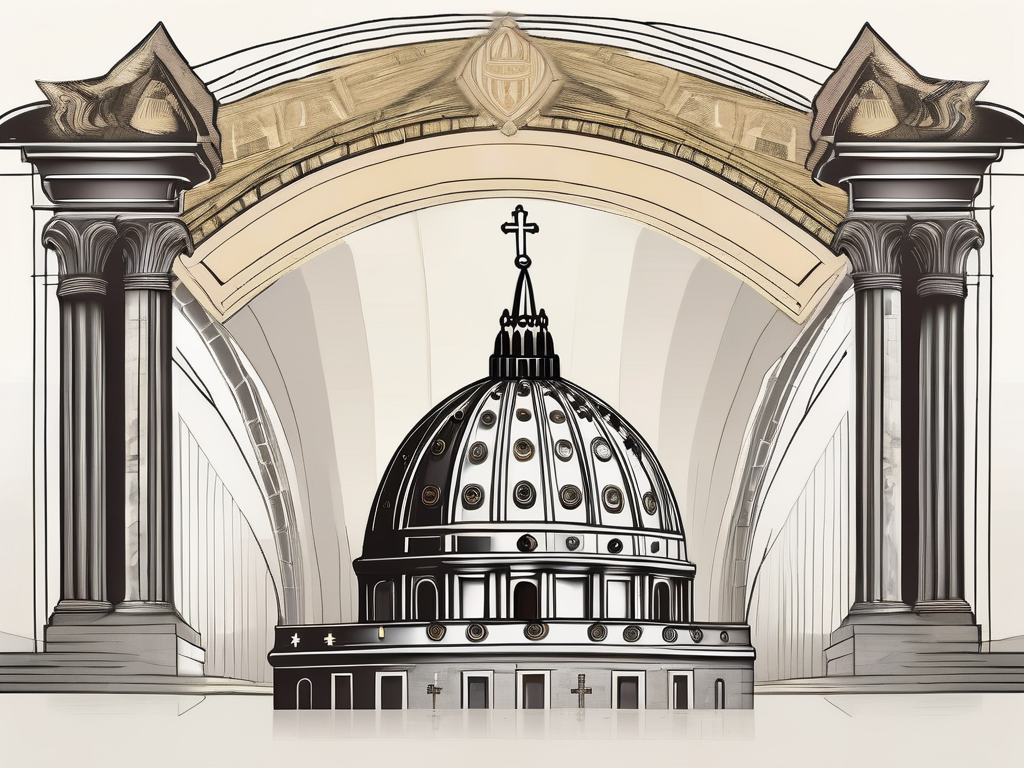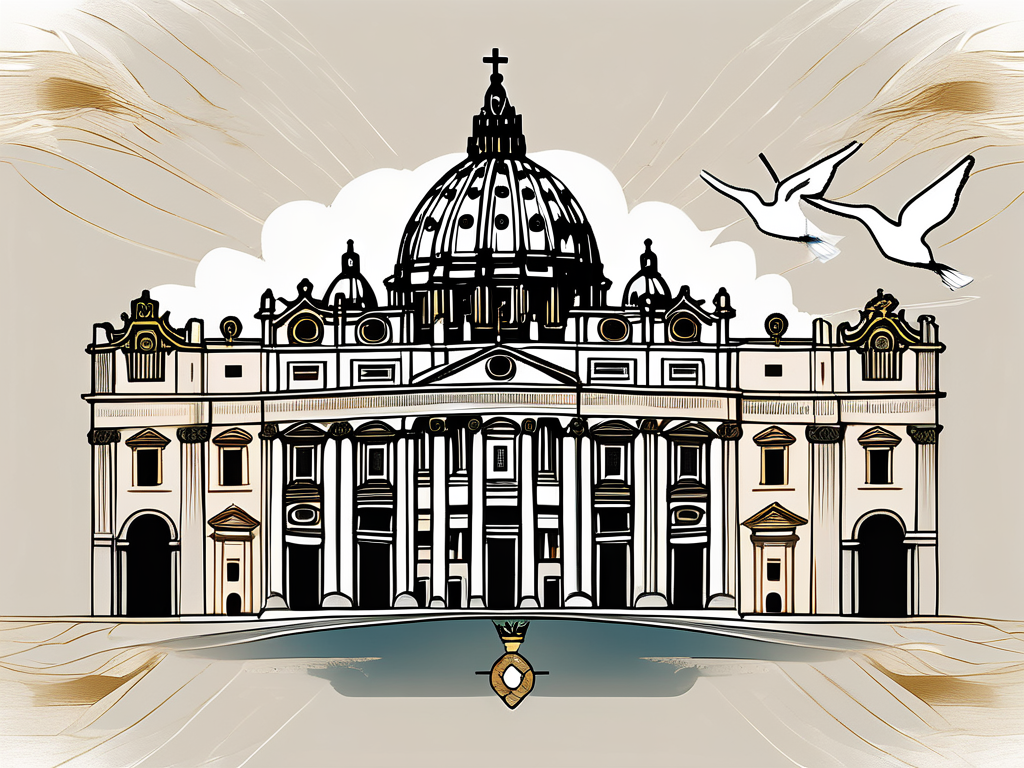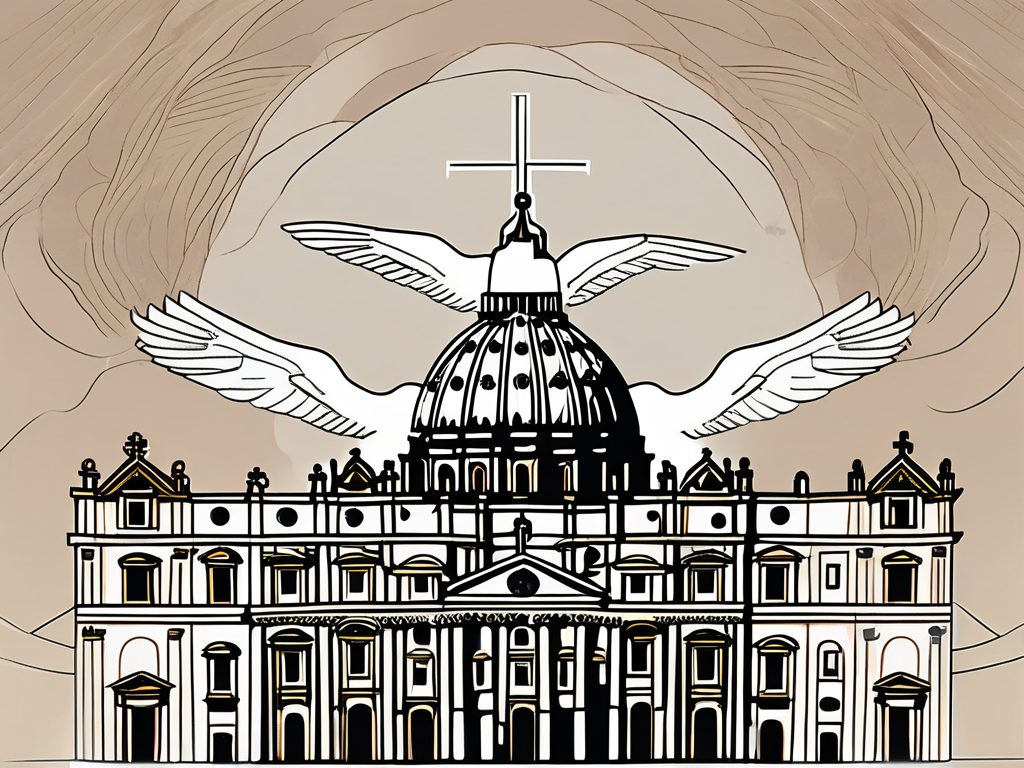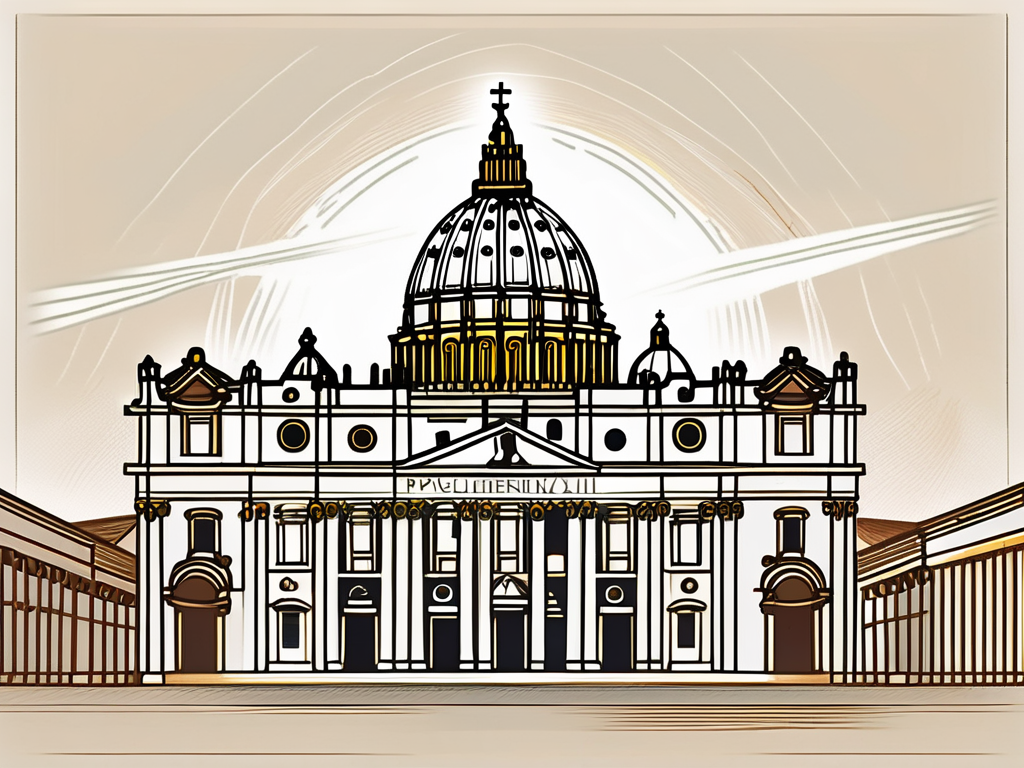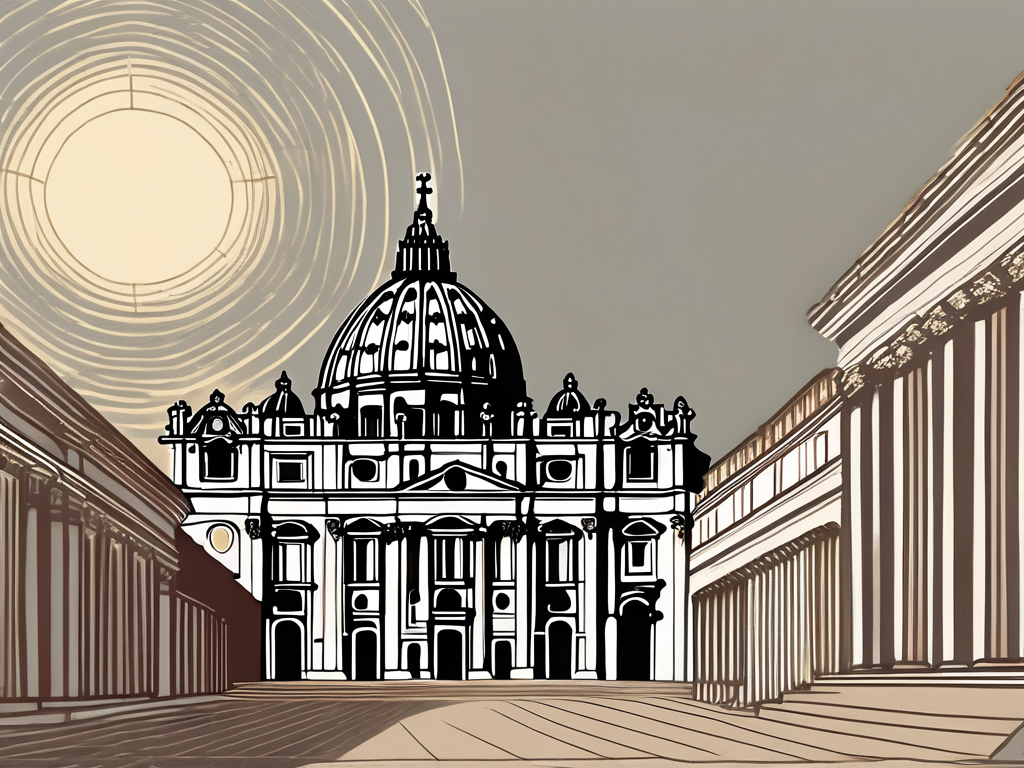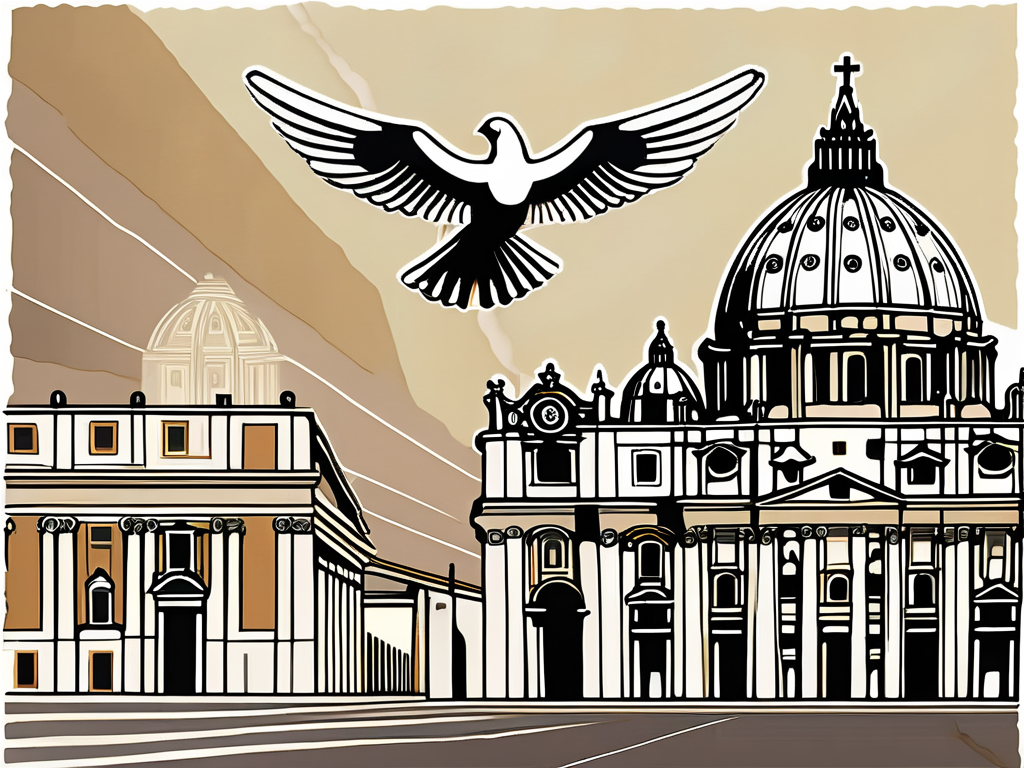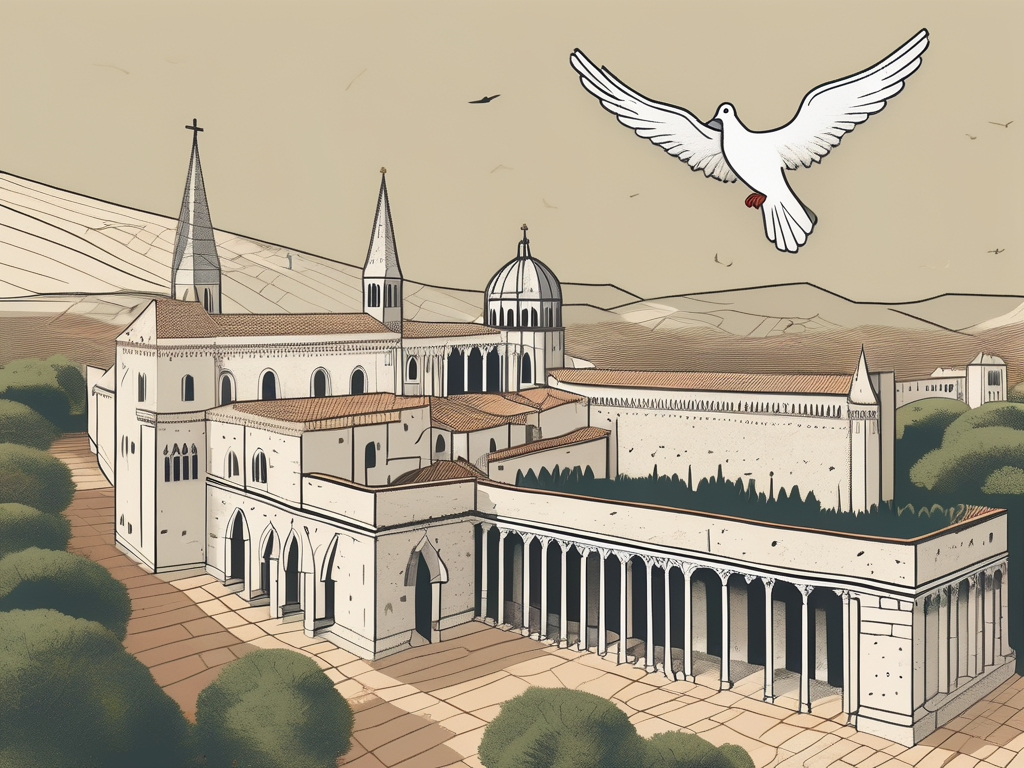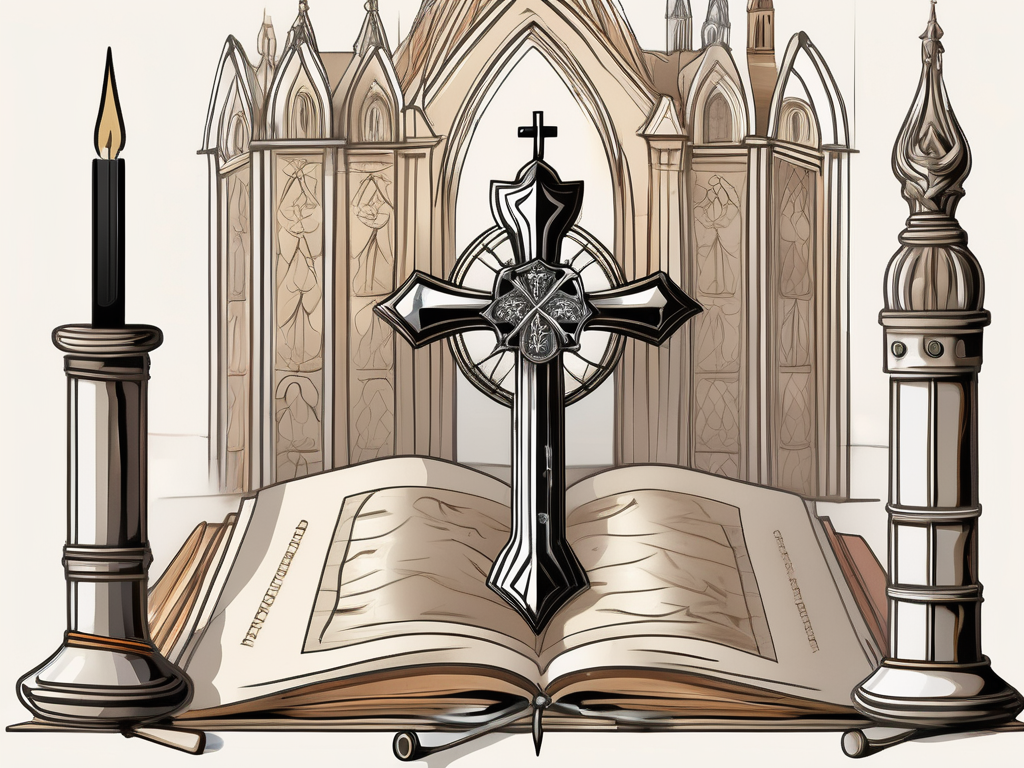Pope Clement XII, born Lorenzo Corsini, was a prominent figure in the history of the Catholic Church. His early life and education shaped his path to becoming one of the most influential popes of his time. Let’s take a closer look at the remarkable journey of Pope Clement XII and the lasting impact he left on the Catholic Church.
Early Life and Education of Pope Clement XII
Birth and Family Background
Pope Clement XII, originally named Lorenzo Corsini, was born on April 7, 1652, in the beautiful city of Florence, Italy. He was born into a noble and influential family, known for their deep devotion to the Catholic Church. The Corsini family had a rich heritage, with ancestors who had held prominent positions within the Church for generations.
As a child, Lorenzo grew up surrounded by the splendor of Florence, a city renowned for its art, culture, and religious fervor. The Corsini household was a hub of intellectual and spiritual activity, with discussions about theology, philosophy, and the role of the Church being commonplace. It was within this nurturing environment that Lorenzo’s love for his faith began to take root.
From an early age, Lorenzo displayed a remarkable curiosity and an insatiable thirst for knowledge. His parents, recognizing his potential, provided him with the best education available. They wanted him to have a well-rounded education, so they sent him to the prestigious University of Pisa.
Education and Early Religious Influences
At the University of Pisa, Lorenzo immersed himself in the study of theology, philosophy, and canon law. The rigorous academic environment challenged him to think critically and develop a deep understanding of the Catholic faith. Lorenzo’s professors recognized his exceptional intellect and dedication, and they nurtured his passion for learning.
During his time at the university, Lorenzo had the opportunity to interact with renowned theologians and scholars. These encounters broadened his perspective and deepened his understanding of the Church’s teachings. He engaged in lively debates and discussions, which further fueled his desire to serve the Catholic community.
One of the most influential figures in Lorenzo’s life was a wise and respected cleric who became his mentor. Under the guidance of this mentor, Lorenzo delved deeper into his spiritual journey, exploring the complexities of faith and the responsibilities of Church leadership. The mentor’s wisdom and guidance left an indelible mark on Lorenzo’s heart, shaping him into the compassionate and visionary leader he would become.
As Lorenzo continued his studies, he became increasingly aware of the challenges facing the Catholic Church. He witnessed firsthand the struggles of the faithful and the need for strong leadership. It was during this time that Lorenzo felt a calling to dedicate his life to serving God and his fellow believers.
With his education complete and his faith fortified, Lorenzo Corsini was ready to embark on a remarkable journey that would ultimately lead him to the highest position within the Catholic Church – the papacy.
Ascension to Papacy
Election and Papal Inauguration
In 1730, Lorenzo Corsini was elected as Pope Clement XII, following the death of his predecessor, Pope Benedict XIII. His papal inauguration marked the beginning of an era filled with significant challenges and notable accomplishments.
As the newly elected Pope, Clement XII faced the daunting task of leading the Catholic Church during a time of political unrest and conflicts with secular powers. The weight of this responsibility was not lost on him, and he embraced his role with a sense of duty and determination.
The papal inauguration ceremony was a grand affair, attended by dignitaries and representatives from all corners of the Catholic world. The Sistine Chapel, with its awe-inspiring frescoes, served as the backdrop for this momentous occasion. The air was filled with anticipation and hope as Pope Clement XII took his place on the throne of St. Peter.
Challenges Faced During His Early Papacy
At the onset of his pontificate, Pope Clement XII faced numerous challenges. The Church was grappling with political unrest and conflicts with secular powers. However, Pope Clement XII approached these difficulties head-on, demonstrating unwavering determination and resilience.
One of the major challenges Pope Clement XII faced was the ongoing struggle for power between the Church and various European monarchs. These rulers sought to assert their authority over the Church, often at the expense of its autonomy and spiritual integrity. Pope Clement XII, however, refused to compromise on the principles and teachings of the Catholic faith, standing firm against any attempts to undermine the Church’s authority.
Amidst the turmoil, Pope Clement XII sought to restore stability and unity within the Church. His steadfast commitment to his faith and the well-being of the Catholic community fueled his efforts to bring about positive change. He implemented reforms aimed at strengthening the Church’s infrastructure and promoting greater transparency and accountability among its clergy.
Furthermore, Pope Clement XII recognized the importance of fostering strong relationships with other Christian denominations and promoting interfaith dialogue. He believed in the power of unity and cooperation in addressing the challenges facing the Church and society at large.
During his early papacy, Pope Clement XII also faced internal challenges within the Vatican. He worked tirelessly to streamline the administrative processes and improve the efficiency of the Curia, the Church’s governing body. His reforms aimed to ensure that the Church’s resources were used judiciously and that its mission of spreading the Gospel was carried out effectively.
Despite the many obstacles he encountered, Pope Clement XII remained steadfast in his commitment to the Church and its mission. His leadership and vision laid the foundation for a period of growth and renewal within the Catholic Church, leaving a lasting legacy that continues to inspire and guide believers to this day.
Major Contributions and Reforms
Architectural and Artistic Contributions
Pope Clement XII’s passion for art and architecture left an indelible mark on the Vatican and Rome. He oversaw the construction of numerous churches, chapels, and palaces, adorning them with beautiful works of art and grand architecture. These projects not only enhanced the aesthetic appeal but also served as a testament to the Church’s enduring presence and influence.
One of the most notable architectural contributions of Pope Clement XII was the construction of the Basilica of St. John Lateran. This magnificent basilica, considered the oldest and highest-ranking of the four major basilicas in Rome, stands as a symbol of the Pope’s commitment to the Catholic Church. Its grandeur and architectural splendor continue to awe visitors from around the world.
In addition to the Basilica of St. John Lateran, Pope Clement XII also commissioned the construction of the Church of Sant’Ivo alla Sapienza. Designed by the renowned architect Francesco Borromini, this church is a masterpiece of Baroque architecture. Its unique spiral dome and intricate facade showcase the Pope’s dedication to promoting artistic excellence within the Church.
Furthermore, Pope Clement XII’s artistic contributions extended beyond architecture. He patronized renowned artists of the time, such as Giovanni Battista Piranesi and Giuseppe Bottani, who created stunning frescoes and sculptures for the Vatican and other religious institutions. These works of art not only adorned the walls and altars but also conveyed powerful religious messages, inspiring devotion among the faithful.
Reforms in the Catholic Church
Pope Clement XII was committed to addressing the concerns within the Catholic Church. He implemented significant reforms, focusing on areas such as clergy discipline, the education of priests, and the welfare of the faithful. Through these reforms, Pope Clement XII aimed to strengthen the Church’s moral authority and promote spiritual growth.
One of the key reforms initiated by Pope Clement XII was the establishment of stricter guidelines for the conduct of the clergy. He emphasized the importance of maintaining moral integrity and discipline among priests, ensuring that they serve as exemplary role models for the Catholic community. This emphasis on clergy discipline helped restore public trust in the Church and reaffirmed its commitment to upholding high moral standards.
Additionally, Pope Clement XII recognized the significance of education in nurturing future religious leaders. He invested in the establishment of seminaries and educational institutions, providing aspiring priests with a comprehensive and rigorous education. By prioritizing the education of priests, Pope Clement XII aimed to equip them with the knowledge and skills necessary to effectively serve the Church and its followers.
Furthermore, Pope Clement XII’s reforms extended to the welfare of the faithful. He established charitable organizations and initiatives to alleviate poverty and provide assistance to those in need. These efforts not only demonstrated the Pope’s compassion and concern for the less fortunate but also emphasized the Church’s role in promoting social justice and compassion.
In addition to his reforms within the Catholic Church, Pope Clement XII sponsored missionary activities, supporting efforts to spread Catholicism to distant lands. His dedication to expanding the Church’s reach showcased his commitment to the global Catholic community. Through these missionary endeavors, the Pope aimed to bring the message of Christianity to people of different cultures and backgrounds, fostering a sense of unity and solidarity among believers worldwide.
Controversies and Criticisms
Disputes with the Roman Aristocracy
During his papacy, Pope Clement XII faced several disputes with the Roman aristocracy. These conflicts arose from power struggles and conflicts of interest. Despite the challenges, Pope Clement XII handled these issues with wisdom and diplomacy, striving to maintain a delicate balance between the Church’s influence and secular authorities.
Health Issues and Their Impact on His Papacy
Pope Clement XII faced a series of health issues throughout his pontificate, which impacted his ability to govern effectively. Despite his declining health, he remained steadfast in his duties, seeking guidance from trusted advisors and relying on his unwavering faith.
His resilience in the face of physical challenges exemplified his unwavering commitment to serving the Catholic Church and its followers.
Pope Clement XII’s Legacy
Influence on Subsequent Popes
Pope Clement XII’s legacy extended far beyond his own pontificate. His contributions and reforms laid the foundation for future popes, inspiring them to continue pursuing positive change within the Catholic Church. His dedication to strengthening the Church’s influence and enhancing its cultural legacy served as a guiding light for his successors.
Long-term Impact on the Catholic Church
Pope Clement XII’s significant contributions and reforms continue to impact the Catholic Church to this day. His architectural projects and visionary approach to arts and culture have left an indelible mark on Vatican City and Rome. Furthermore, his efforts to foster unity and address internal challenges contributed to the Church’s resilience and adaptability over the years.
The life and legacy of Pope Clement XII stand as a testament to the power of faith, determination, and a commitment to positive change. His contributions continue to inspire and influence those who follow in his footsteps, ensuring an enduring impact on the Catholic Church.
